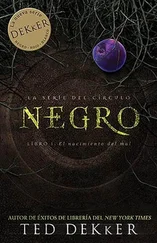I did not eat using all of my fingers as they did, but picked at my food using only one finger and my thumb, afraid I might inadvertently consume some live creature like an ant; some piece of ash that might have drifted onto the food; some sliver or dirt that might have fallen from the ceiling.
I did not walk about barefoot or scamper through the underbrush as did the children, but chose each placement of my feet cautiously, like a soldier stepping his way through a minefield.
I butchered their language, rarely managing to deliver a full sentence without granting the children some amusement. Heaven only knows what kind of lewd or ridiculous statements came out of my mouth those first weeks. But as the months passed I learned, more each day.
I was too far removed from their customs to understand or engage in any of their ceremonies or dances, which seemed to be the central focus of their passion once the sun set.
Apart from their politics, which I knew little about, and their animism, which I knew even less about, the Tulim way of life was profoundly simple. They collected, prepared, and ate food; they fashioned and maintained their dwellings; they slept; they danced and sang; they warded off evil spirits; they obsessed over babies, and they talked ceaselessly about all of the above.
But in these ways, wasn’t their life similar to the life of the tribe I had left upon boarding the jetliner bound for Australia? With limited resources, the Tulim used much simpler devices to accomplish their tasks, but the knowledge and sophistication required to live was no less in the jungle than anywhere else in the world.
Take, for example, the harvesting and preparation of the starchy staple sago, which Momos had formally introduced me to. The food is in the pith of the palm tree’s massive trunk, and getting it out is a chore.
The trees are a closely guarded treasure. Fell a sago tree belonging to another and you might pay with your life. I watched from a boulder with several of the younger children as three men and four women went to work on one of Momos’s sago palms. Little Yellina was kind enough to explain every detail of their labor, rattling on nonstop despite the fact that I understood only a fraction of what she said.
They felled the palm, stripped off the copious thorns, and split its thick bark with an ironwood wedge. But that sweaty task was only the start of the process. Over the next few hours they dug out the pith and beat it to loosen the starch. Using water retrieved from a nearby creek, they washed the fibers over a screen that caught the starch as the water flowed through into a trough they’d built on the spot for the harvesting of that single tree.
The end result was a paste, which they rolled into banana leaves for transport back to the village, a good hour’s hike, two hours with me in tow.
Simple. But who had been the first to cut down such a tree, cut it open, beat and wash the pith for the tiny bits of sago growing between the fibers, and then consume the bland starch as we might eat bread?
My only contribution to the Tulim those first weeks was in my offering of fashion. It started with the legs that Lela had convinced me to cut off my capris. Left with two tubes of black polyester, it occurred to me that I could cut off a band with a bamboo knife and give it to little Yellina to wear around her head. The lower class had no golden bands to encompass their foreheads, but polyester stretched easily enough and might make the perfect bandanna for my new little friend.
To say the black headband was a hit with Yellina understates just how much delight she took in her new headpiece. In the next twenty-four hours I had cut the legs of my slacks into thirty-one similar bands, half of which I gave to clambering children before Lela suggested I trade the rest for food.
I can’t tell you how many places I saw those bands over the next few weeks. What started out as headbands soon became armbands, thigh bands, bundle carriers, slings, washcloths, sago wraps…the Tulim’s inventiveness knew no bounds. I saw strips of my slacks around the necks of two different piglets with a leash attached; at least one woman used that cloth as a sanitary napkin.
I steadily progressed in my understanding of the Tulim language as I began applying every waking hour to learning it. As a wam who had learned Tulim as a second language herself, Lela was a patient and effective teacher. As were the children, who prided themselves on being the first to teach me a new word or point out a new bird.
Day by day my appreciation for their way of life grew. That which I had once found horrifying, like the Tulim’s grubs or their nakedness, became tolerable and then ordinary, then acceptable. As my vocabulary expanded, so did my appreciation for many of their customs.
They recalled their history through dances and long, hypnotic songs and chants that sounded more like speeches put to music than the kind of melodic choruses I had learned to sing. They spent hours on carvings, using stone chisels to cut stories and beliefs into their shields and their spears.
Their many taboos took some patience to understand, but given the Tulim worldview they started to make some sense. It was forbidden for any man to sleep with a woman during her menstrual period because she could not conceive when bleeding, and the only purpose of copulation was to produce children. Neither could any man sleep with a girl who had not yet bled, for the same reason.
No woman could enter battle or kill any boar or crocodile lest she be injured and unable to bear children. If a woman pleased the spirits and her husband, she would conceive. If she still did not conceive, it was because one of her ancestors had offended the spirits, and she would only be cleansed with the river of life, which came from a man.
As in most cultures, men lived by a different standard. The stronger the man, the stronger his urge to father children. To produce the rivers of life necessary for fathering those children, a man had to stay strong by killing wild pigs, or by taking the lives of his enemies, which included anyone outside the Tulim, particularly those who attempted to enter the valley. Furthermore, men should not plant food or harvest it, because these actions robbed them of the energy they needed to hunt and kill the enemy and to pass life on to their women.
I still had not been called to Wilam and for this I was thankful. I rarely even saw him, and when I did I went out of my way to avoid him. In many ways I felt like a forgotten piece of luggage, and I didn’t mind.
My only real use to them was in childbearing, and I wasn’t interested in fulfilling this function.
Lela, on the other hand, was.
She was bleeding now. This meant she could be taken as a wife. A young man among the royal muhan had been eyeing her. Her days were filled with anticipation and excitement. My lack of enthusiasm confounded her. For fertile Tulim women, not bearing children was like not eating or breathing.
I was finding my way among the Tulim, but I was grateful not to be Tulim. I think deep down inside I still hated them.
It was nearly sixty days from my capture before my world was turned on its end once again.
I had learned to sleep reasonably well on a bedding of grass, using dried leaves bound by twine as a pillow. The nights did not get cool enough to merit any covering. My only frustration was the insects that braved the hut when the fire died; they crawled over my body as I slept. Unless I wanted to spread the smelly mud on my skin to ward them off, I had no choice except to tolerate them.
The pervasive smoke that had once bothered me so much became my friend once I understood that insects were repulsed by it as well. Indeed, all sago and other foods were stored on racks above the fire and so remained insect-free, a rather ingenious storage system, I thought.
Читать дальше












